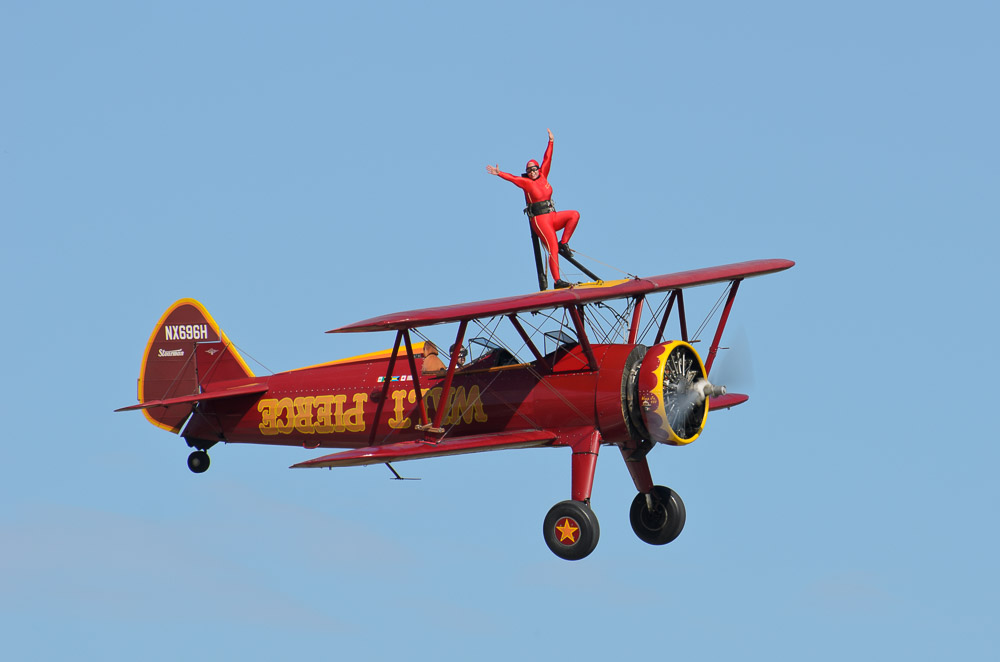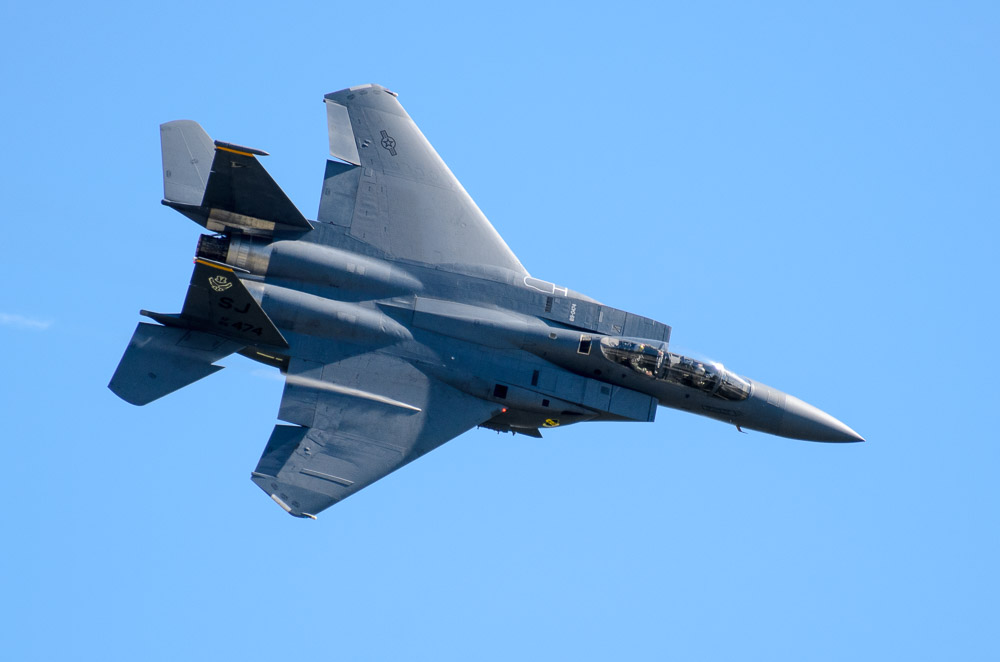
6 Important Considerations To Make Your Day Enjoyable
Knowing what photography equipment to take to an air show makes a huge difference. Sure, you will more than likely get all the shots you want by taking several bodies, five or six lenses, a flash or two, and every accessory in your arsenal. But I guarantee that you are going to be miserable dragging all of that around for an entire day on concrete in 100-degree weather.
The secret to an enjoyable day photographing an air show is to go as light as possible. Strip everything out of your camera bag except the bare essentials. Here are some photo equipment recommendations to consider when packing for your next air show.
Camera Selection
Any good quality DSLR or mirrorless system will work great as an air show camera. The only features you should check for are the ability to control exposures, fairly fast focusing, fast frame rate, and uses interchangeable lenses. That pretty well applies to every DSLR and mirrorless camera.
Sensor size is something to consider. Those with the APS-C sensors get the added benefit of a 1.5 magnification factor on whatever lens they are using. Those with full-frame sensors typically get higher quality images and the ability to make larger prints.
How many cameras should you carry? I typically only carry one camera with me in order to keep weight down. The disadvantage with only having one camera is having to change lenses throughout the day. Not always desirable in what can be a dusty environment.
A good compromise common today is using a DSLR with a long lens for the flight demonstrations. Backing that up would be a lightweight mirrorless system that can be used for the static displays.
Lens Selection
Keep the number of lenses you carry at an air show between two and three. I recommend a 70-300 mm lens for capturing the flight demonstrations. The lens is small and light enough to be comfortable using all day. When racked out to 300 mm, the aircraft at center stage fills the frame nicely. Back off on the zoom a bit, and you can capture multiple aircraft.
I’ve tried lugging a 200-500 mm lens around for a few air shows. It was just too much to handhold for the entire day. Plus, the 200-500 mm range was just too much for the subject matter. It’s not easy tracking a jet flying several hundred miles an hour with a 500 mm lens. You will spend most of the air show trying to reacquire your target.
For the static displays, I recommend a 24-70mm lens. It’s a wide enough angle to work close into your subject, thus reducing extra people and distractions. Also able to zoom in when you can’t get close enough to your subject.
One other lens that may be worth experimenting with is an ultra-wide angle zoom. These lenses can make some very nice images, but you have to work very close to your subject and you usually need to include something in the foreground to anchor or balance out the image.

Tripod or Monopod
I don’t use tripods or monopods at air shows. I’m moving around constantly, so they just get in the way and are extra weight. In addition, a tripod can be a trip hazard for others causing damage to your equipment and possibly a liability issue if someone gets hurt. Many air shows won’t allow their use.
I do see a lot of photographers using tripods with gimbaled heads and big glass at air shows. But they are only shooting the flight demonstrations and are stuck in one spot all day long. Not my idea of a good time.
An alternative to the tripod is the monopod, but I find those just as limiting. Monopods are fine when the subject is straight out from you. With aircraft in the air, it is nearly impossible to find a comfortable way to position the monopod to support the camera and quickly get the shot.
Flash Equipment
Leave the flash equipment behind. Unless you are doing a fashion shoot out there, you don’t need it. If you just have to take a flash, take the smallest one you have.
Accessories
Strip any and all accessories out of your camera bag that you don’t need. I recommend carrying a small notebook, a pen, a lens cleaning cloth, an extra battery, an extra memory card or two, some pain relievers for head and backaches, and a few business cards if you have them.
Camera Bag
As I mentioned in the previous article, I recommend the use of fanny pack-style camera bags for air shows. That type of bag puts all the weight on your hips and is typically out of the way. When you need equipment or a quick lens changing table, you can pull the bag around to the front.
Shoulder bags and backpack-style bags work great but put all the weight on your shoulders and back. This can get very uncomfortable when shooting all day long.
I have also found a photo vest to be useful, but they can get hot out on the flight line. I recently purchased a SCOTTeVEST travel vest. Although not designed specifically as a photo vest, the SCOTTeVEST has a ton of pockets, is lighter than most photo vests, and doesn’t give an outward appearance of being a photo vest.
To wrap this up, we’ve discussed how many cameras to carry to an air show, some good lenses that prove useful, the drawbacks of carrying a tripod or monopod, and finally, what works best for holding all of your gear. The important thing to remember when photographing air shows is to keep your equipment as light as possible while still maintaining your ability to get the shots.
What have I overlooked? Do you have any equipment recommendations for air show photography? Leave a comment below and share your opinions.
